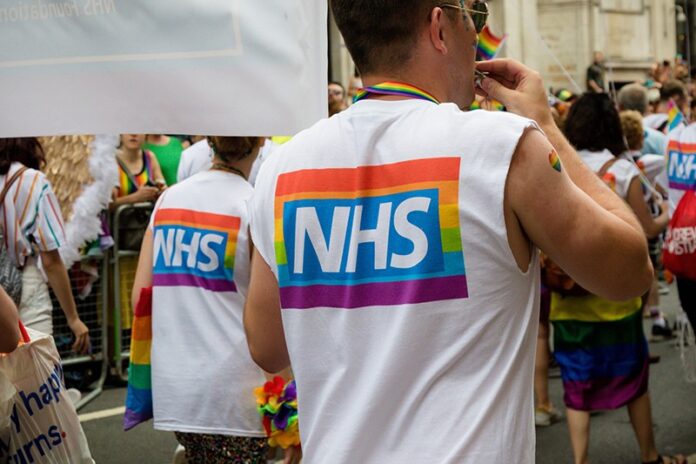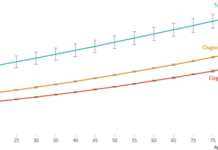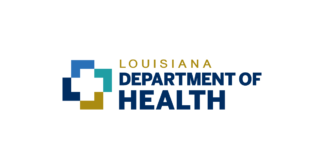In 2007, 55-year-old Australian sociologist Gary Dowsett was diagnosed with prostate cancer. On the basis of his relatively young age and his test results, his physicians told him that radical prostatectomy — surgery to remove his prostate completely — was his best option. The procedure went well, but Dowsett had questions — he wanted to know how it would affect his sex life as a gay man, and how to negotiate the physical, sexual and emotional changes that would result from his treatment. For the most part, his questions went unanswered. “Medical professionals were sympathetic, but most knew next to nothing about gay men,” says Dowsett.
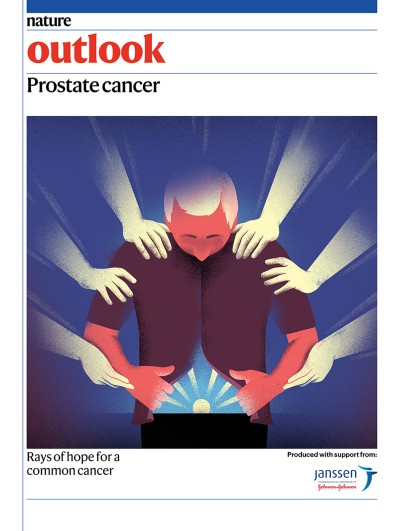
Part of Nature Outlook: Prostate cancer
Having worked in social HIV/AIDS research for about 40 years, Dowsett, an emeritus professor at the Australian Research Centre in Sex, Health and Society at La Trobe University in Melbourne, was shocked to discover how far behind prostate-cancer physicians and researchers were in understanding men’s sexuality. “It was all about erections, as if sex starts and ends there,” he says. There were no patient-education materials available for men who have sex with men; nor was there much scientific literature. “There was quite a bit for heterosexual men in terms of intimacy with their wives,” Dowsett says. But for gay and bisexual men, who are more likely than heterosexual men to be single when diagnosed with prostate cancer1, and might engage in different sexual practices, little of that applied. “That’s really what got my dander up,” he says.
Physicians might not realize that the needs and concerns of gay and bisexual men are different from those of heterosexual men, says Channa Amarasekera, a urologist and director of the Gay and Bisexual Men’s Urology Program at Northwestern Medicine in Chicago, Illinois. Although the biology of prostate cancer is the same for all, the impact that the disease and its treatments have on a person can vary significantly depending on their sexual orientation and preferred sexual practices.
Dowsett started working in prostate-cancer research after his treatment. He and other researchers have made considerable progress in documenting the experiences of people from sexual and gender minority groups, and uncovering the impact that prostate-cancer treatments have on them. “The quality of life is really affecting some people, and we need to recognize that,” says Daniel Dickstein, a radiation oncologist at Icahn School of Medicine at Mount Sinai in New York City. However, evidence of the problems facing gay and bisexual men will not by itself enable clinicians to advise their patients properly: empowering physicians with evidence-backed guidance, and improving communication, will also be crucial.
Understanding the impact
The prostate, a gland which lies along the urethra between the bladder and penis, is the second most common site of cancer in men worldwide, trailing only slightly behind lung cancer. About one in six gay and bisexual men will develop prostate cancer; there is little research into its incidence in transgender women. But it is only in the past decade that research into prostate cancer specifically in gay and bisexual men has gained interest, says Simon Rosser, a behavioural psychologist at the University of Minnesota in Minneapolis.
Prostate cancer is typically treated by removing the gland through surgery, or by killing cancerous cells using radiation. These can be combined with androgen-deprivation therapy, in which the person’s levels of testosterone are reduced to slow the growth of the tumour.
Common side effects of these treatments include urinary incontinence, erectile dysfunction, a reduced libido and impaired ability to ejaculate. These are broadly similar for all patients, but some differences have been noted between heterosexual men and gay and bisexual men. One study, for example, showed that gay and bisexual men have worse urinary, bowel and hormonal function than heterosexual men after treatment for prostate cancer, but better erectile function2. Similarly, a study led by Jane Ussher, a clinical psychologist at Western Sydney University in Australia, found that gay and bisexual men are more likely than heterosexual men to be able to get and sustain an erection after prostate-cancer treatment3. “One of the reasons for that is that they are more likely to do something about it — like to go and get counselling, try penile injections and suction devices, or use Viagra,” she explains.
In many cases, the impact of sexual dysfunction arising from prostate-cancer treatment is magnified in gay and bisexual men. “Due to differences in sexual practices, they may have additional concerns, and some sexual side effects will be more bothersome or challenging to manage,” says Sean Ralph, a consultant therapeutic radiographer at Leeds Cancer Centre, UK, and co-founder of Out with Prostate Cancer, the United Kingdom’s first prostate-cancer support group for gay and bisexual men and transgender women.
For example, an erection must be 33% firmer for anal intercourse than for vaginal intercourse4. This makes any loss of erection hardness more of a problem for men who engage in insertive anal intercourse — not purely the preserve of gay and bisexual men, but nonetheless a part of many such relationships.
The prostate also acts as an organ of sexual pleasure and orgasm for some people through anal stimulation. “Many men think prostate stimulation is the be-all and end-all in gay sex,” says Rosser. If the prostate is removed, in many cases so, too, is the pleasure for men who have receptive anal intercourse5. Rosser also estimates that one-third of these men experience anodyspareunia, or pain during anal intercourse — double the rate before treatment. And removing the prostate puts a stop to ejaculation. “That was a real blow for me,” says Dowsett. Visible semen can be a sign of a satisfying sexual experience. In a 2013 study, Dowsett and his team found that men who have sex with men were more distressed by the loss of ejaculate than were heterosexual men6.
Communication blockage
A 2016 study led by Ussher found that gay and bisexual men with prostate cancer report significantly lower quality of life and satisfaction with treatment than do heterosexual men1. In some cases, the psychological impact might be made worse by the fact that many people are not made aware of all of the consequences of their therapy beforehand.
Dowsett notes that the loss of the ability to ejaculate after a radical prostatectomy was absent from much of the public-health literature at the time he was diagnosed — he learnt of it only after he went for a second opinion. Similarly, Ussher says that many people are not told that their penis can shorten after a radical prostatectomy, or that this is sometimes temporary. Failure of health professionals to discuss these highly relevant effects of treatments with their patients often leads to lasting anger, distress and harm, says Rosser. “It’s an ethical violation in my mind,” he says.
Physicians also commonly overlook the specific side effects for people from sexual and gender minorities — essentially taking away their ability to make an informed decision about their treatment, Amarasekera says. When physicians do consider a person’s sexuality, there are actions that might improve quality of life. For example, Dickstein suggests that inserting a hydrogel spacer between the prostate and rectum, which reduces the amount of radiation the rectal wall is exposed to, might improve a person’s ability to engage in receptive anal intercourse.
There are also risks that particularly affect gay and bisexual men that could be avoided if physicians are made aware. For example, men are usually advised to resume sexual activity soon after prostate-cancer treatments to help with erectile function, but receptive anal intercourse can cause damage. Clinicians should also consider the use of drugs called poppers in this group of people, Dickstein says. These inhaled drugs, made from chemicals called alkyl nitrites, are commonly used by gay and bisexual men to relax their anal sphincter muscle and enhance sexual pleasure. However, if they are combined with Viagra — often prescribed for erectile dysfunction — the results could be devastating, warns Dickstein. Both drugs lower blood pressure, and the mixture could cause serious cardiovascular problems.
Unfortunately, most physicians do not ask people about their sexual orientation or practices7. “This sets up a don’t-ask-don’t-tell dynamic where patients can’t be honest with you about who they are and what their problems are,” says Amarasekera. Urologists have reported concern about offending their older, more conservative patients by asking about their sexual orientation. “But the majority are not offended,” says Rosser. “All you need to do is ask.” The fact that transgender women are at risk of prostate cancer is also often forgotten (see ‘Targeting treatment for transgender women’).
In many cases, the problem is a lack of education and training among clinicians. Amarasekera has found that many urologists have received less than five hours of instruction on how to treat people from sexual and gender minorities7, and most felt that they needed more.
There is, for example, a lack of guidance on how to discuss the various sexual roles that a gay or bisexual person can take on in anal intercourse, and the implications for treatment. “One might identify as a top or insertive partner, a bottom or receptive partner, or might be versatile and engage in both, and that may change the treatment discussion,” explains Dickstein. In some cases, changing roles after treatment could improve quality of life. However, such a change will not be acceptable for everyone. “It’s not as simple as, I’ll just change a role — both the psychological and social consequences of that are much more complicated and long-term,” warns Dowsett.
It is therefore important that conversations between physicians and patients go deeper than covering just sexual orientation. “You have to move past orientation and understand sexual preferences or interests if you really want to take into account the whole post-treatment experience,” Dowsett says. And this goes for people who are heterosexual, as well — even though the average age of diagnosis is 66, Dowsett says that many people might be willing to try new things, including sexual aids, to improve their quality of life after treatment if physicians are able to discuss it. “It’s very hard to shift the urology and oncology fields to stop thinking about straight men with prostate cancer as being their grandfathers,” Dowsett says.
Culture of trust
Another obstacle to tailoring treatment to gay and bisexual men is that some people might not be forthcoming about their sexual orientation because of mistrust or past trauma. Many people will have had negative experiences with health-care services, says Ralph. For example, one gay man in his support group had surgery without disclosing his sexual orientation because he was worried that his operation would be performed in a careless manner if the clinicians knew he was gay. Others will choose to wait until they have met the physician to decide whether they feel safe to discuss it with them, or simply assume that the physician would be able to tell without having to discuss it openly.
To address this, last year Amarasekera launched a programme specifically to help people from sexual and gender minorities to access care. “There was a significant number of patients who identified as gay or bisexual who felt like there wasn’t a space where they could be open about what their issues were when it came to prostate-cancer treatment,” he says. In 2019, the UK National Health Service (NHS) adopted the rainbow-badge initiative, in which staff can opt to wear a badge that marks them as an ally for LGBT+ people and a safe person to talk to. Clinicians applying for the badge do not receive specific training, but are expected to read some brief information and pledge to promote inclusion. “However, the onus is still on the patient to disclose their sexual orientation or gender identity,” says Ralph.
The guidance available to prostate-cancer clinicians and patients is also improving. The American Society of Clinical Oncology and the US National Comprehensive Cancer Network note that discussions on sexual activity and sexuality are important for cancer treatment, although they still do not address specifics of how to tailor screening or treatment to gay and bisexual men.
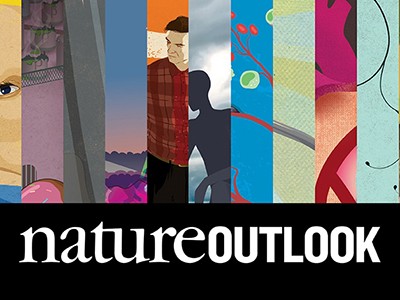
More from Nature Outlooks
In 2021, Ralph published recommendations on anal-sex practices before, during and after prostate cancer interventions8. The advice is based on the opinions of 15 clinical oncologists and 11 urological surgeons in the United Kingdom. It includes recommendations on how to long to wait before engaging in receptive anal sex after radical prostatectomy and radiotherapy, as well as after a biopsy and before a test for prostate-specific antigen — a blood test that is commonly used in screening, but which can be invalidated by prostate stimulation.
To provide further recommendations for clinicians, much more research on people from sexual and gender minorities is required, Dickstein says. “It’s difficult to offer patients advice,” he says. “I can’t say this is the treatment that you should choose because it’s better for having anal receptive intercourse — I seriously do not know.” Evidence for how different treatment approaches might affect problems such as anodyspareunia, for instance, is lacking.
Research into gay, bisexual and other men who have sex with men has been hampered by small sample sizes, says Rosser. The largest such research sample, collected by Rosser in 2019, included 401 people9. “Cancer registries do not routinely collect data on gender diversity and sexuality,” says Ussher. “We don’t know how many people out there with cancer identify as queer, bisexual, gay or lesbian, or who are trans or have an intersex variation.”
We still have a long way to go, says Rosser — not just in terms of research, but also in educating patients and clinicians on how to communicate with each other about sexual orientation and practices. “This might take a while,” he says. But it is essential that prostate-cancer treatment is tailored to each person’s needs. Equitable care does not mean treating everyone the same, Dowsett says, and any clinician who holds that opinion is wrong. “You can still treat people fairly and equally, but must recognize differences that require different responses.”

